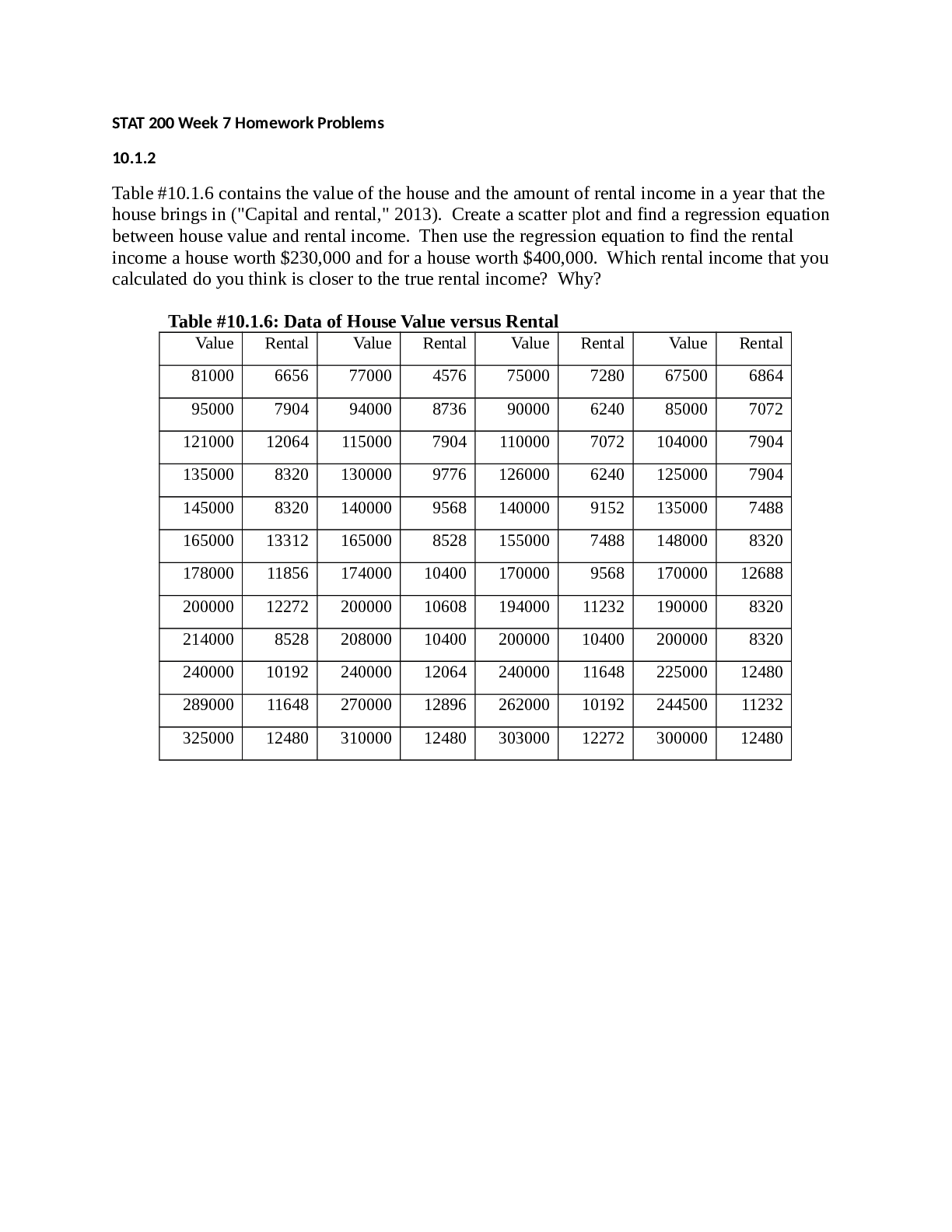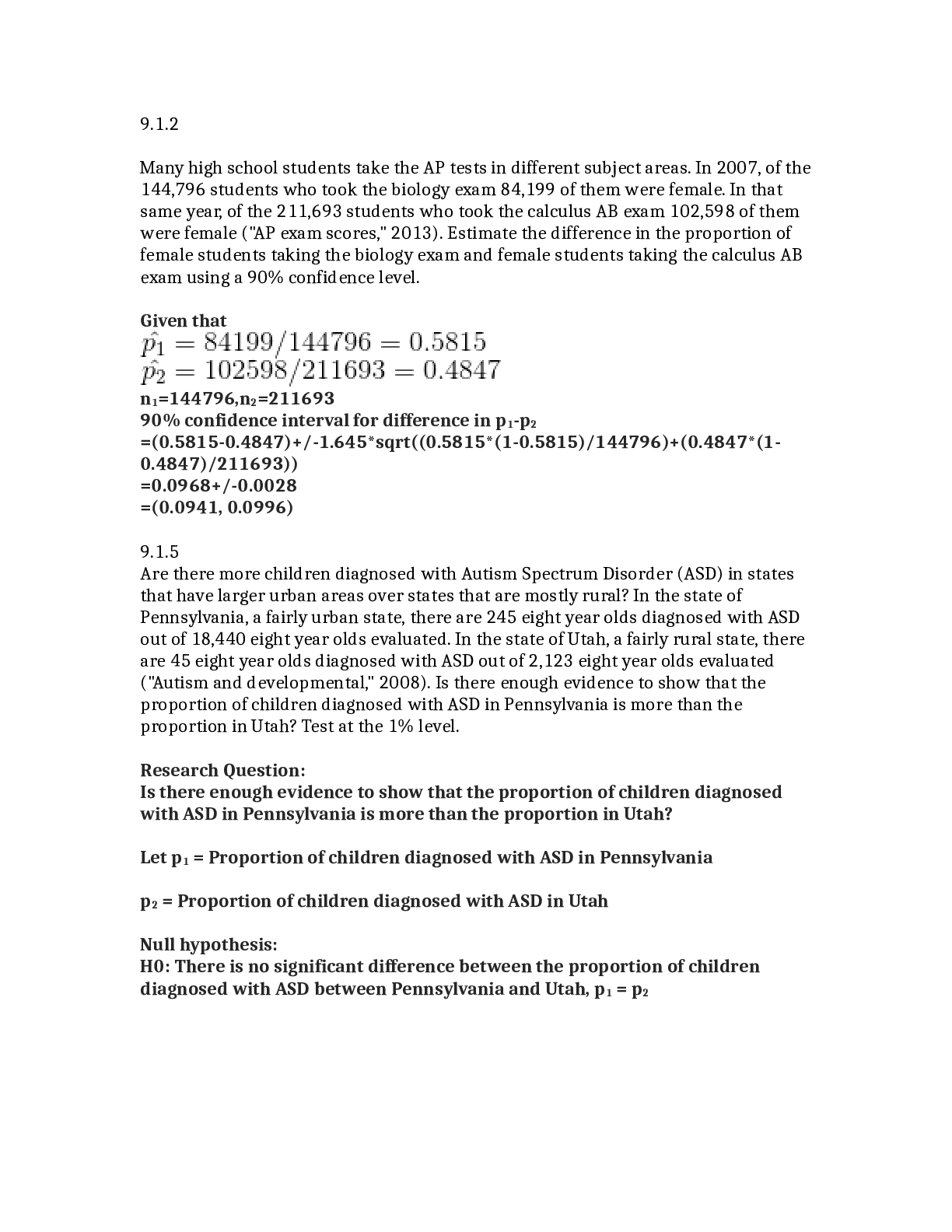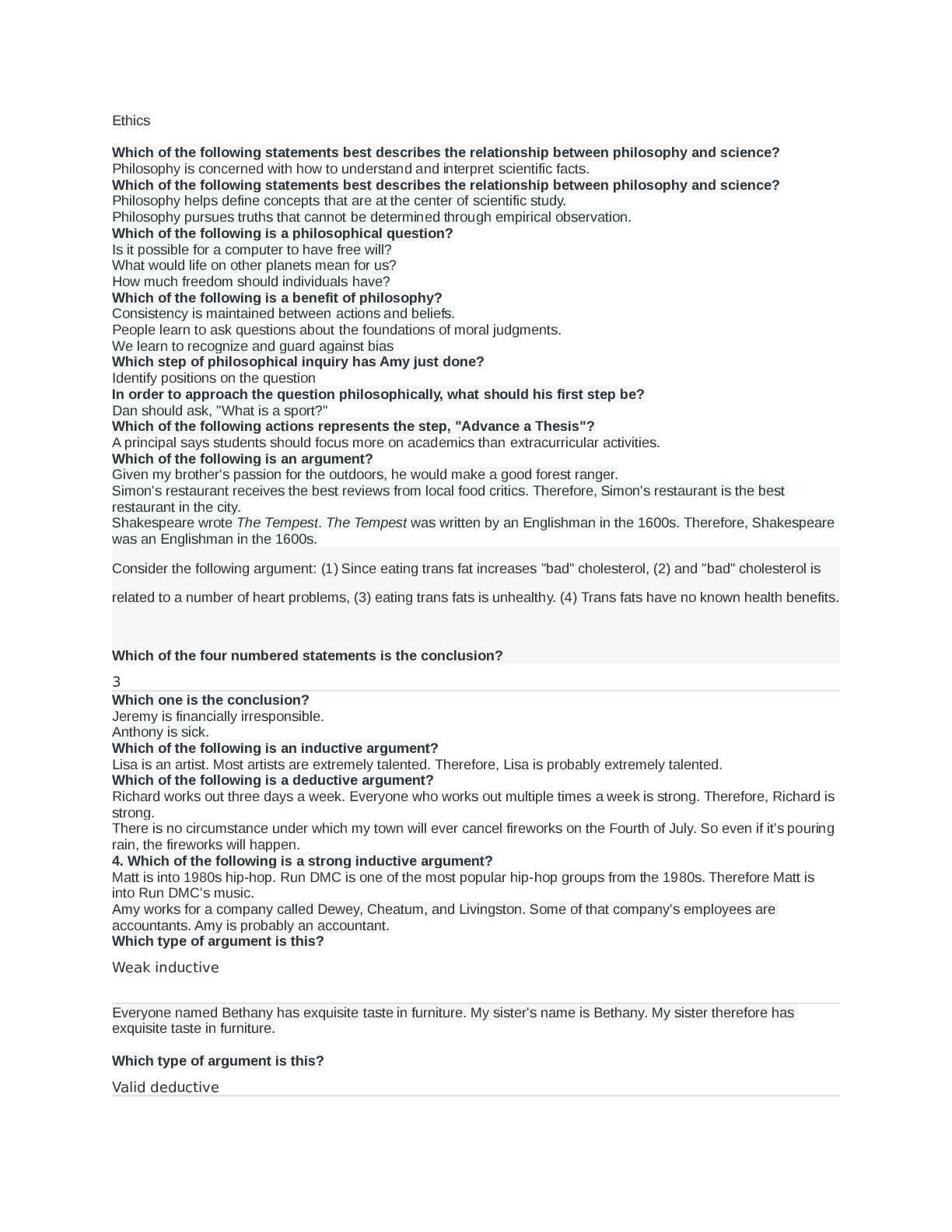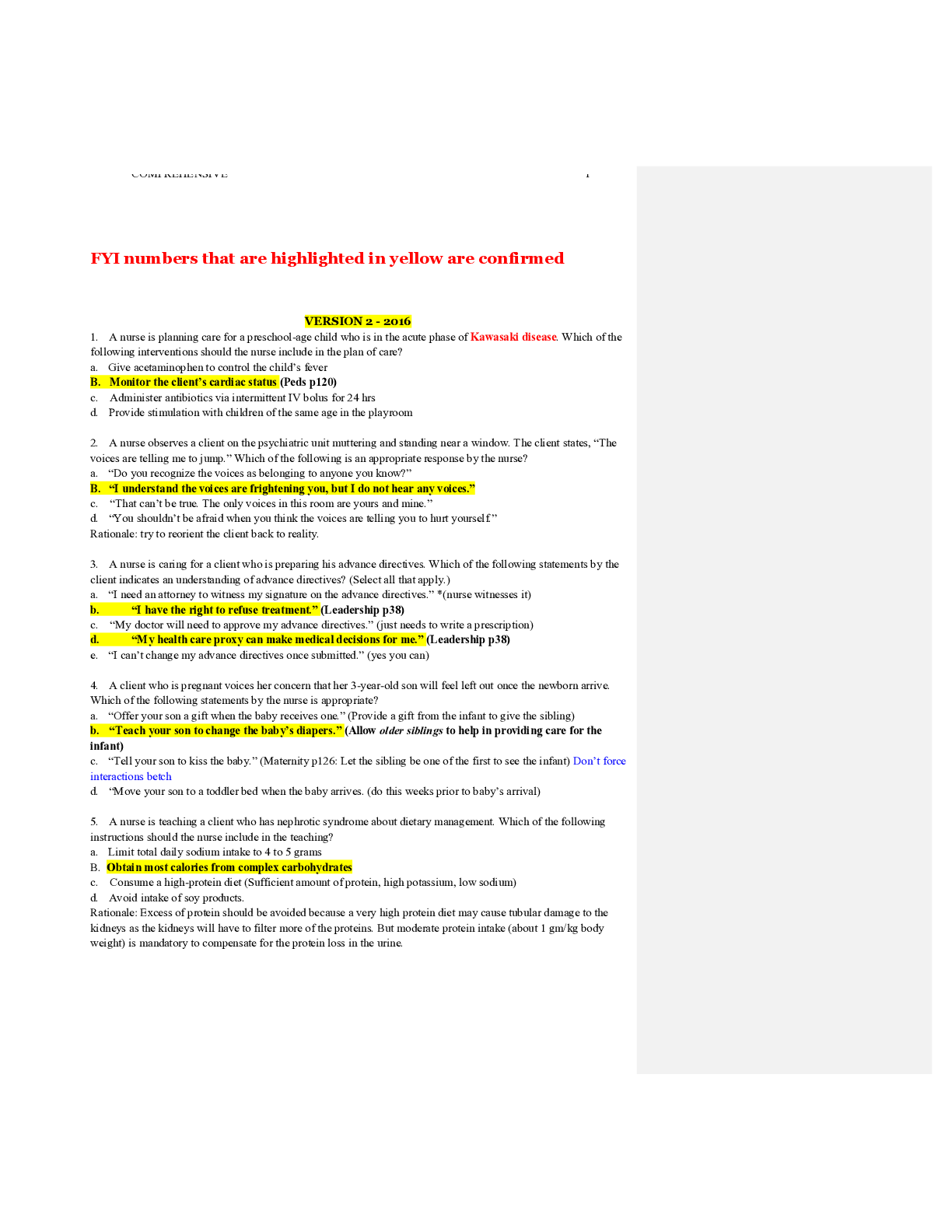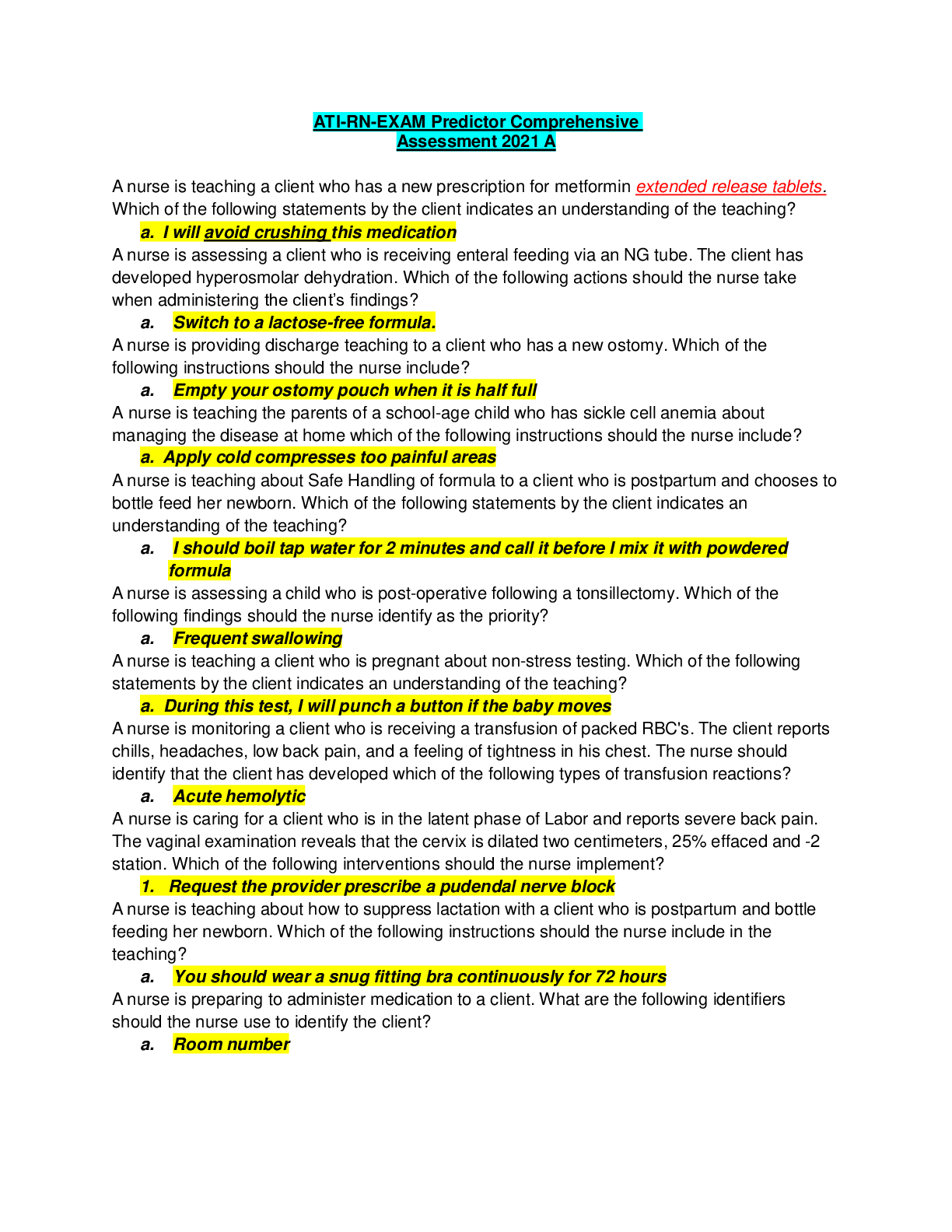Chemistry > QUESTIONS & ANSWERS > Northwest Vista College - CHEMISTRY 1411Homework #4 (All)
Northwest Vista College - CHEMISTRY 1411Homework #4
Document Content and Description Below
Marquize Menchaca Chem 1311.005 Professor Marquise June 28, 2017 Chapter 3, Part 2 70. What mass of a 4.00% NaOH solution by mass contains 15.0 g of NaOH? 375 g 72. What mass of HCl is cont... ained in 45.0 mL of an aqueous HCl solution that has a density of 1.19 g cm-3 and contains 37.21% HCl by mass? 20 g HCl 74. The level of mercury in a stream was suspected to be above the minimum considered safe (1 part per billion by weight). An analysis indicated that the concentration was 0.68 parts per billion. Assume a density of 1.0 g/mL and calculate the molarity of mercury in the stream. 3.4e-9 M Hg 76. A throat spray is 1.40% by mass phenol, C6H5OH, in water. If the solution has a density of 0.9956 g/mL, calculate the molarity of the solution. 1.06e-2 mol/mL C6H5OH 78. A cough syrup contains 5.0% ethyl alcohol, C2H5OH, by mass. If the density of the solution is 0.9928 g/mL, determine the molarity of the alcohol in the cough syrup. 2.0e-2 mol/mL C2H5OH 80. Find the molarity of a 40.0% by mass aqueous solution of sulfuric acid, H2SO4, for which the density is 1.3057g/mL. 8.87 M Chapter 4 2. Consider molecular, complete ionic, and net ionic equations. (a) What is the difference between these types of equations? Molecular means all compounds and/or elements are neutral; complete ionic represents the dissolved ions by their dissociated ions; net ionic represents only those that undergo a chemical or physical change. (b) In what circumstance would the complete and net ionic equations for a reaction be identical? When there is not identical elements or compounds on both the reactant and product side. 8. Fill in the blank with a single chemical formula for a covalent compound that will balance the equation: 14. Indicate what type, or types, of reaction each of the following represents: (a) H2O(g) + C(s)⟶CO(g) + H2(g) displacement (b) 2KClO3(s)⟶2KCl(s) + 3O2(g) decomposition (c) Al(OH)3(aq) + 3HCl(aq)⟶AlCl3(aq) + 3H2O(l) combination, displacement (d) Pb(NO3)2(aq) + H2SO4(aq)⟶PbSO4(s) + 2HNO3(aq) displacement 20. Identify the atoms that are oxidized and reduced, the change in oxidation state for each, and the oxidizing and reducing agents in each of the following equations: (a) Mg(s) + NiCl2(aq)⟶MgCl2(aq) + Ni(s) OH [Show More]
Last updated: 1 year ago
Preview 1 out of 3 pages
.png)
Buy this document to get the full access instantly
Instant Download Access after purchase
Add to cartInstant download
We Accept:

Reviews( 0 )
$7.00
Document information
Connected school, study & course
About the document
Uploaded On
Mar 28, 2021
Number of pages
3
Written in
Additional information
This document has been written for:
Uploaded
Mar 28, 2021
Downloads
0
Views
22



